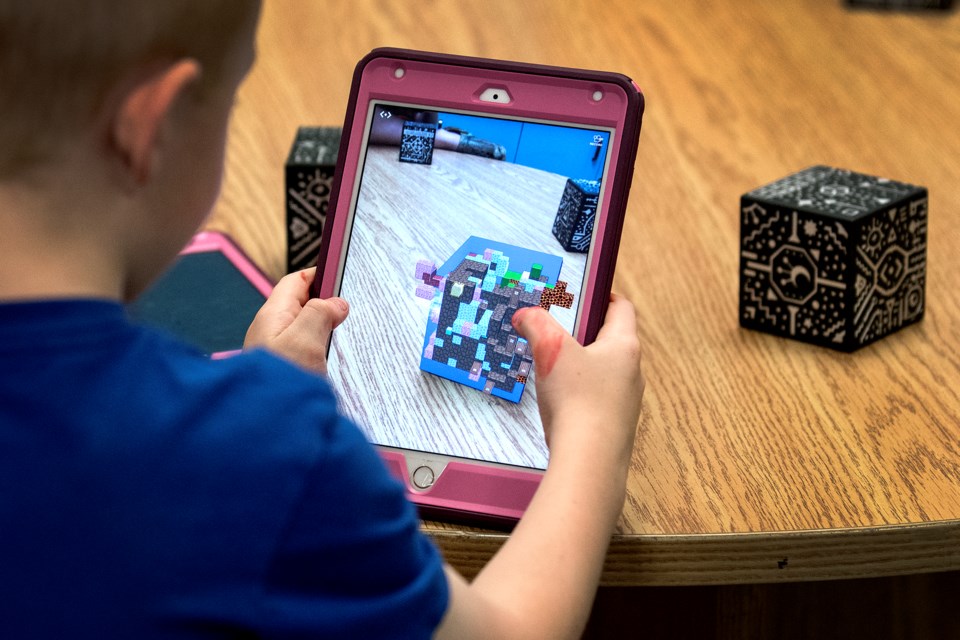ST. ALBERT – The kids are out of school in the middle of the COVID-19 crisis. But it’s important for parents not to panic.
Children, especially very young children, are more flexible than adults sometimes give them credit for. If adults remain calm, kids tend to adjust fairly quickly.
Keeping them busy is a big concern. The easy answer is plop them down in front of the television set. But while young children love to watch cartoons, they also get bored with a steady diet, especially if they are unable to burn off excess energy.
Keeping them excited about learning and life in general is key. However, social distancing is the new catchword of the day and we are required to practise it diligently.
RELATED: Expert says answering kids' questions about COVID-19 pandemic is important
So a successful daily program involves planning a combination of indoor-outdoor as well as sit-down and movement activities.
Below is a combination of activities that require patience but can produce results.
Indoor – Sit-down
• Draw and colour a favourite cartoon character.
• Work on a puzzle with your child. It develops skills such as shape recognition, concentration, goal setting, patience and a sense of achievement.
• Mould silly putty or clay into munchkin size works of art.
• Build a baking-soda spewing volcano (recipes on the Internet).
• Practice letters, numbers and phrases.
• Read favourite books cuddled on the couch.
• Watch birds and squirrels from a window and try to identify the species from a book or the Internet.
• Check out nature channels that broadcast amazing animal documentaries.
• Make crafts. The Internet is chock full of ideas from easy-to-make paper flowers, toilet paper frogs and felt dinosaurs to pencil holders made from cans, cotton batten Easter chicks and foam fish. Or prepare for spring by building milk carton birdhouses and tissue-decorated, flying windsocks.
Indoor – Standup
• Read and act out book characters with simple props such as a scarf and hat.
• Take breaks from sit-down activities by stretching, dancing, doing yoga or listening to music.
• Bake a favourite cake or cookie with your child. If cooking a meal, ask them to chop veggies. If making pancakes or French toast, they can contribute by pouring ingredients or mixing. It’s a great way to learn new skills.
• Young kids love water. Let them help you wash dishes.
• Plant vegetable seeds in a pot. All you need is a pot, light potting soil and seeds. Work with your child to fill the pot with soil and have them drop in a few seeds. Place in a sunny window and keep the soil slightly moistened. Hint: lettuce grows quickly.
• Build a fort using blankets, cardboard boxes and chairs, and let your little one play pretend princess or pirate. Join in and let your inner kid flourish.
Outdoor activities
With the practice of social distancing and number of children’s activity venues opting to close – pools, fitness centres, play parks and schools – going outside the home is a challenge. However, healthy young children need a certain amount of daily exercise.
We suggest staying away from public playgrounds, however a hike on a sparsely populated local trail might be just the thing to burn off energy. Spring is not quite here, but there are wildlife sightings that will stimulate the imagination.
For starters, create a scavenger hunt. Make a list of specific items you might find on a trail. Below are 10 examples.
• Feather
• Y-shaped stick
• Rock or stone
• Brown leaf
• Stem of grass
• Chunk of loose bark
• Something natural and red
• Dried bud or seed pod
• Early spring bud
• Can to recycle
Bring the collection home and do a deep dive to learn more about each piece either through books or websites. Items from the scavenger hunt can also be used to create a work of art.
Most importantly, have fun together. This is an opportunity to turn lemons into lemonade – or a yummy lemon cake.
From St. Albert Today
Read more stories by Anna Borowiecki



